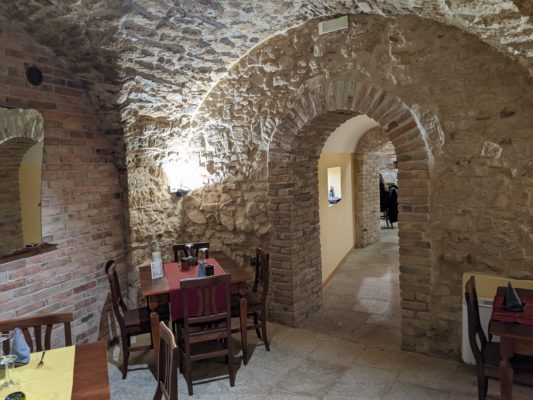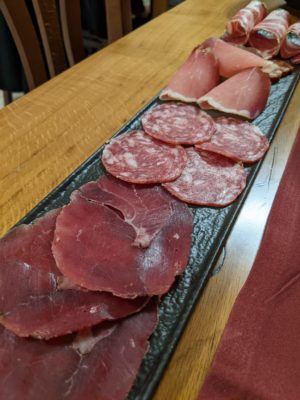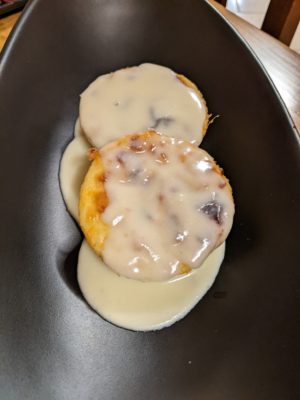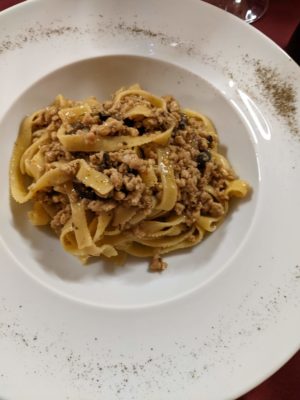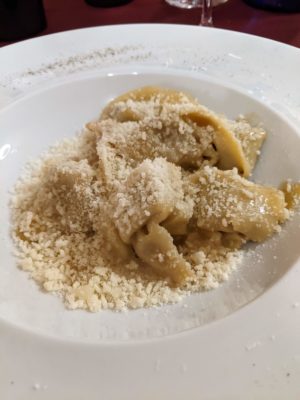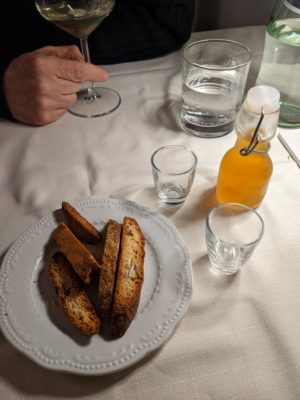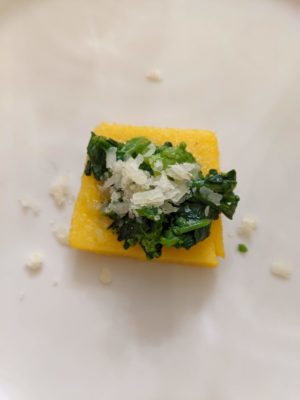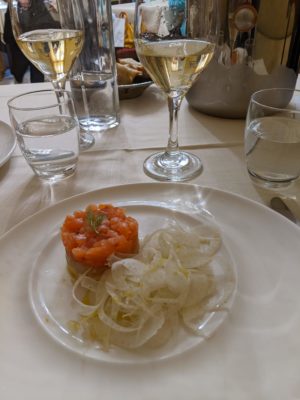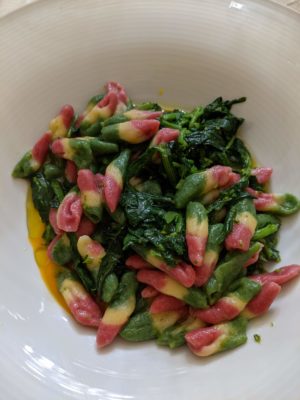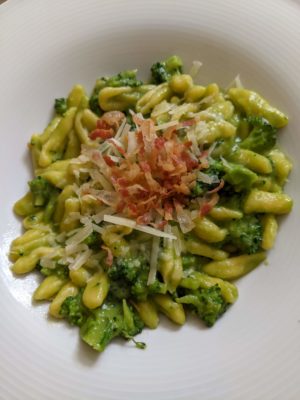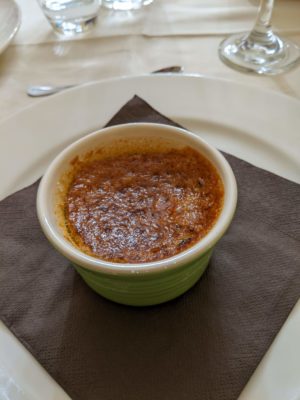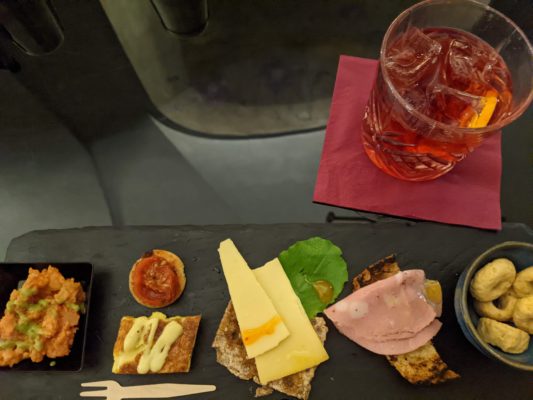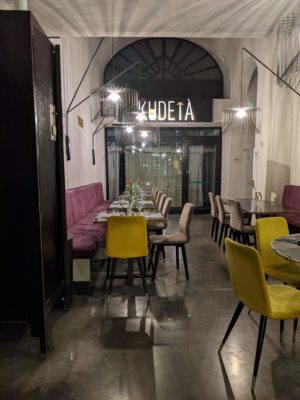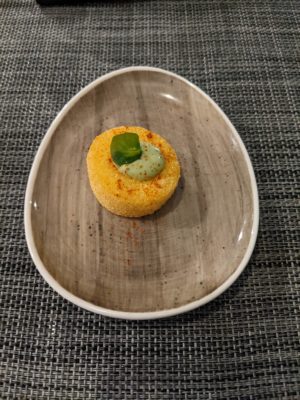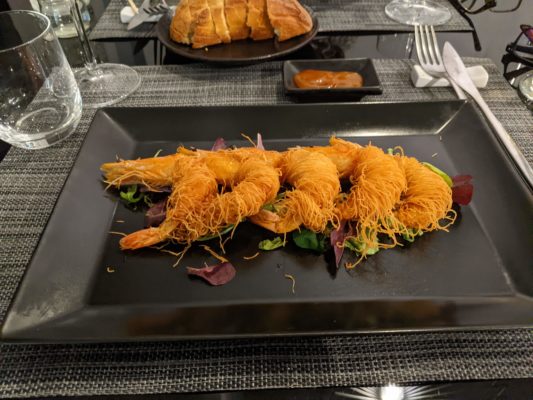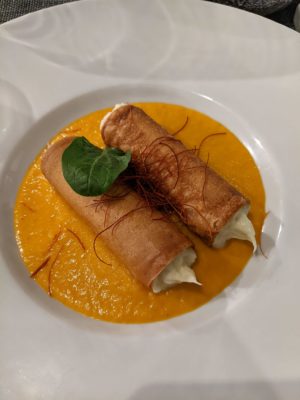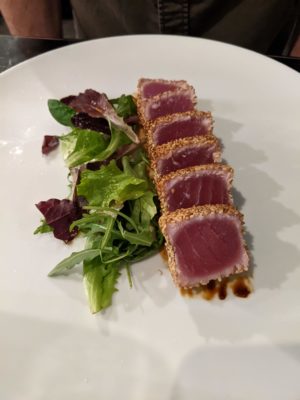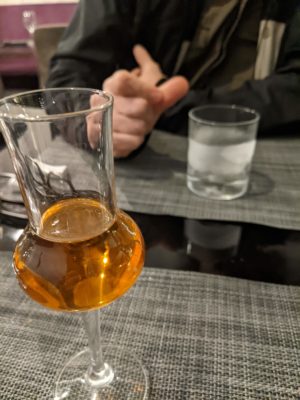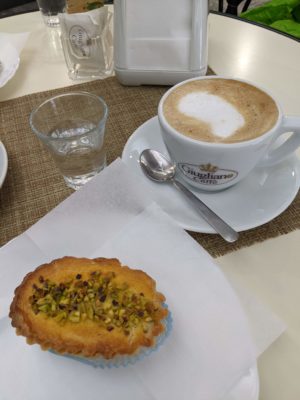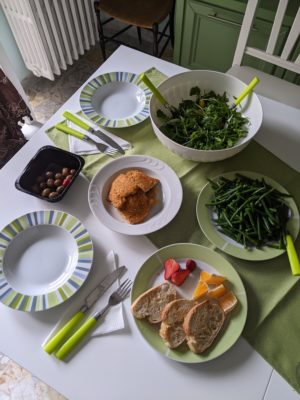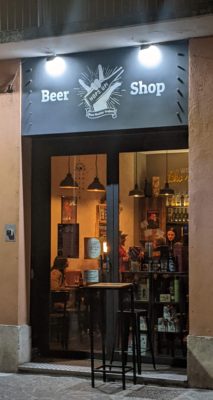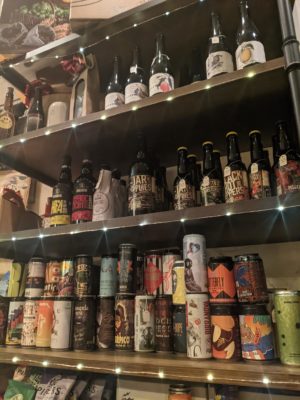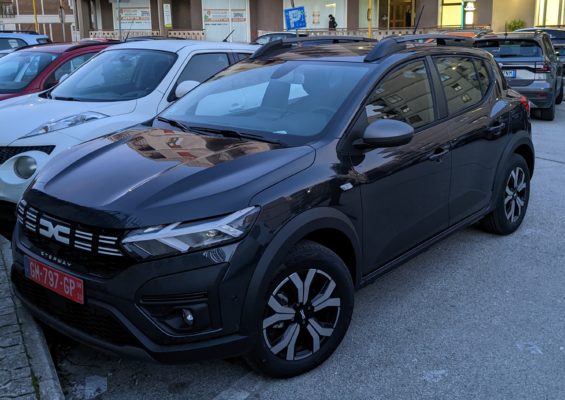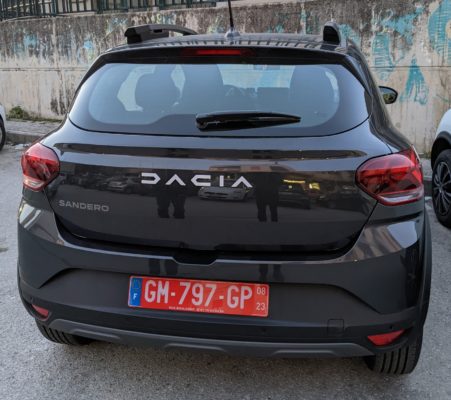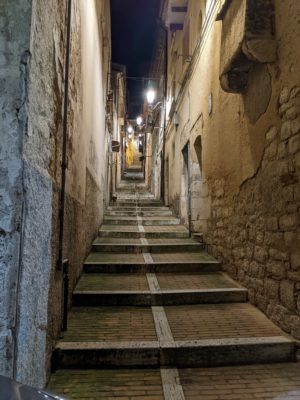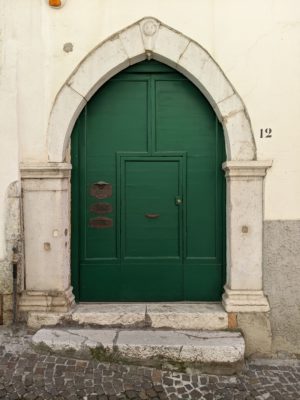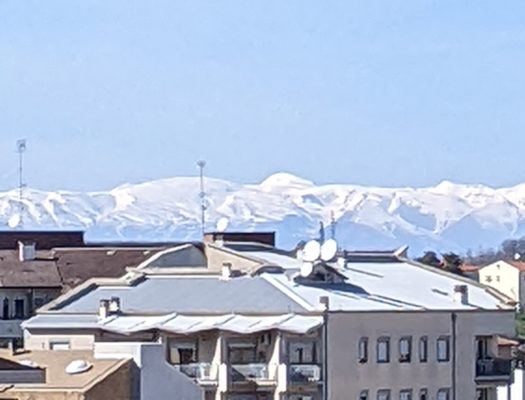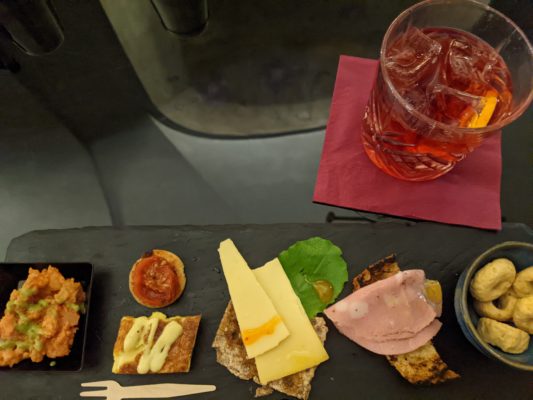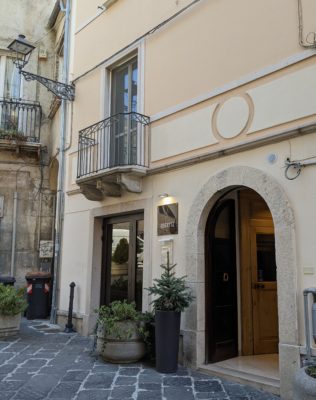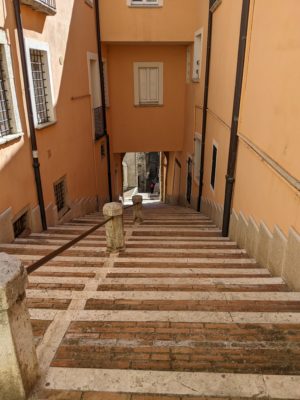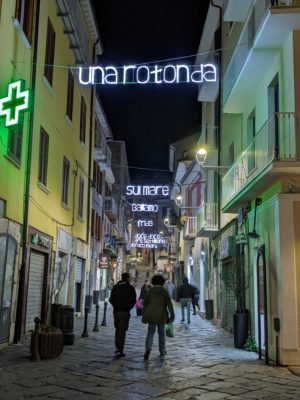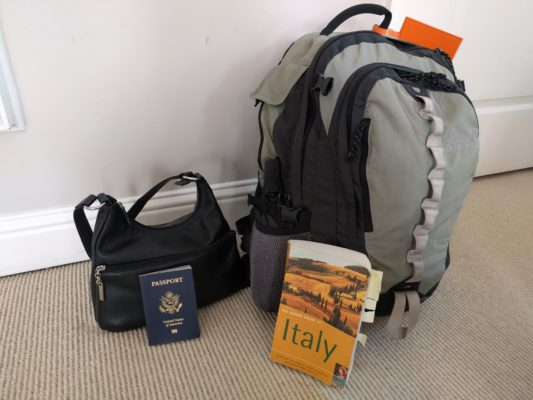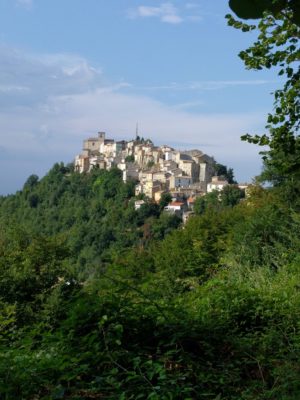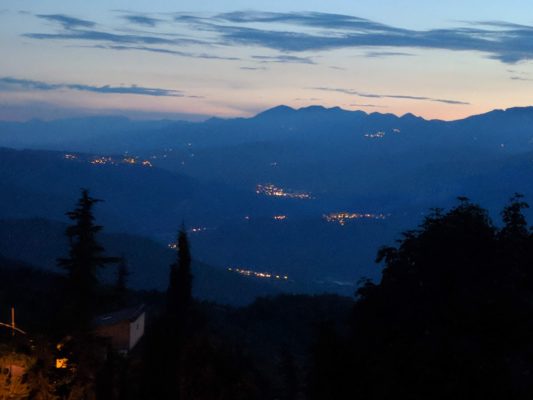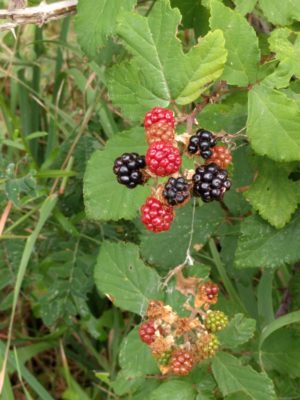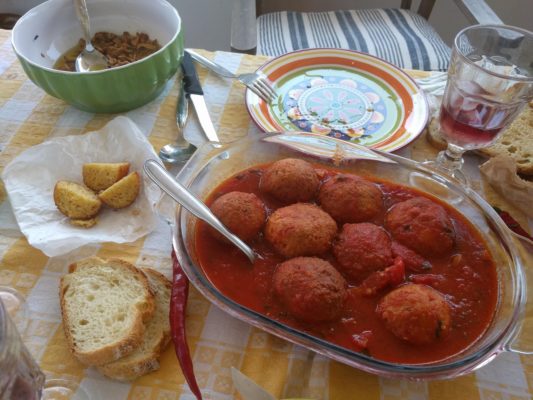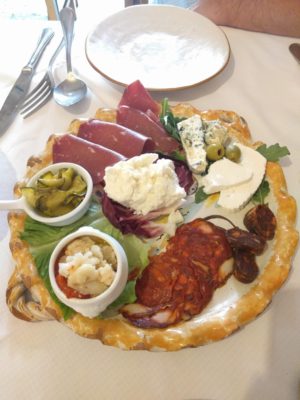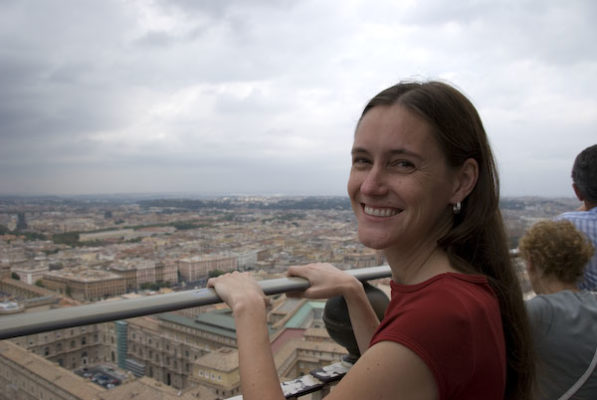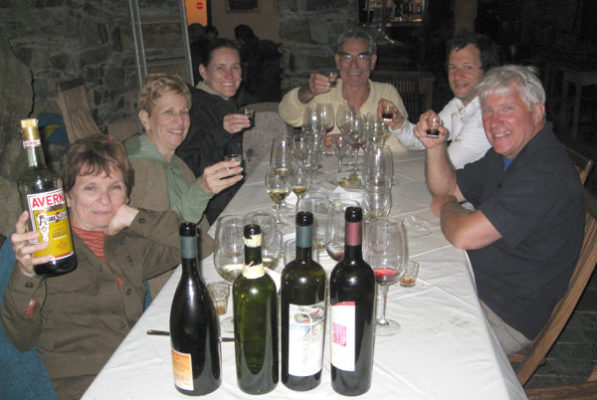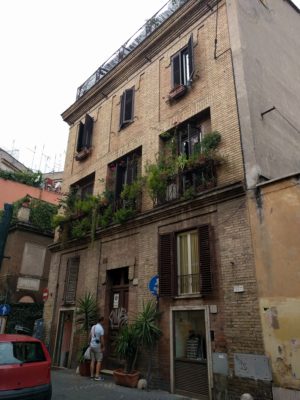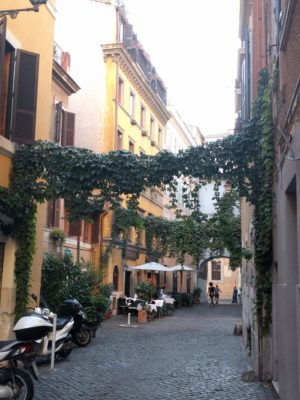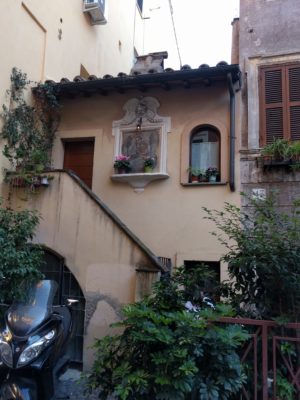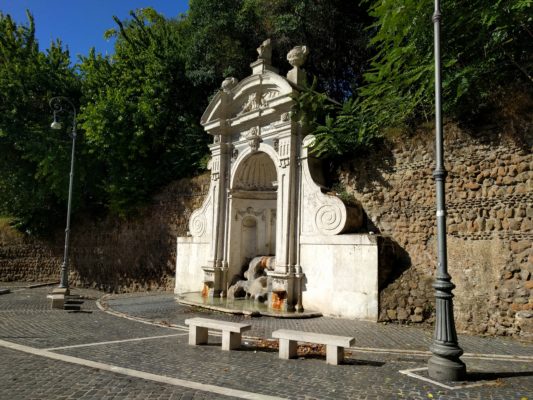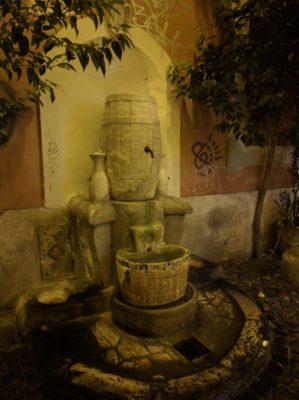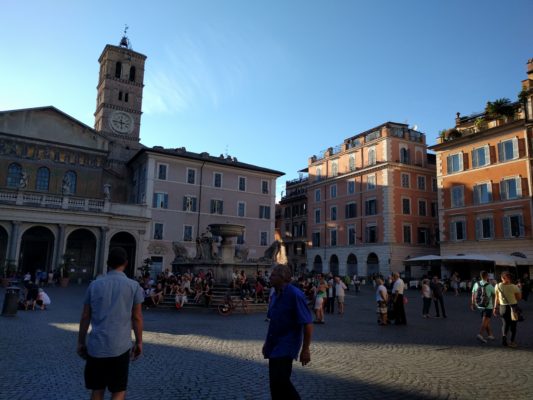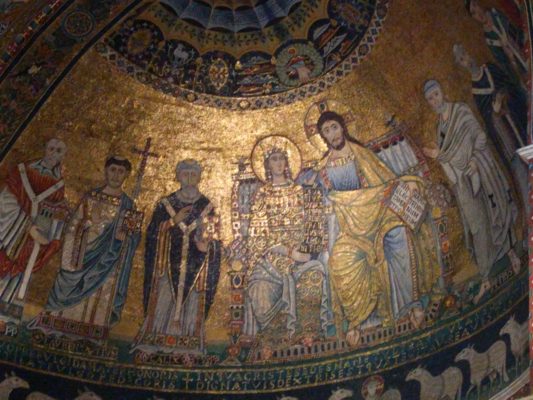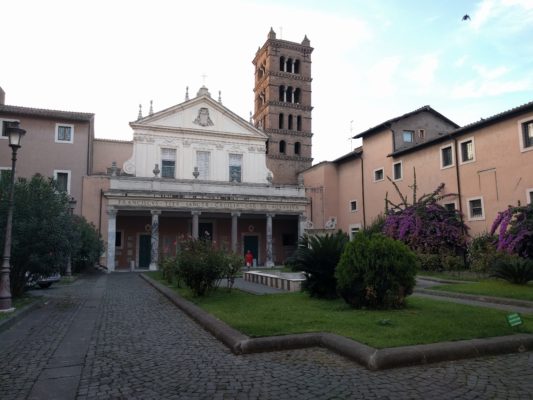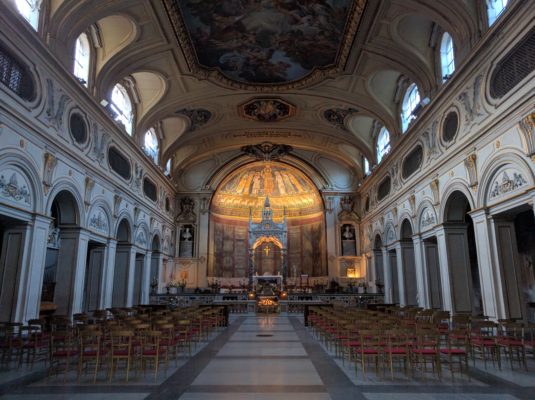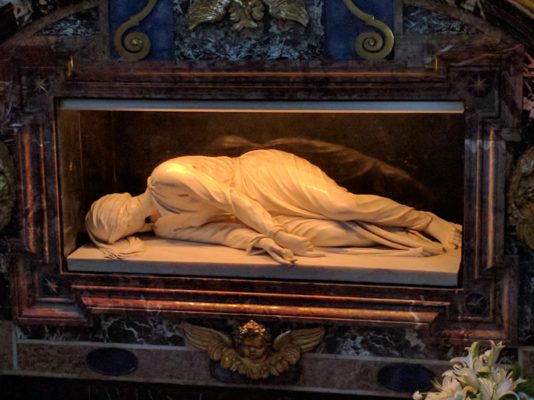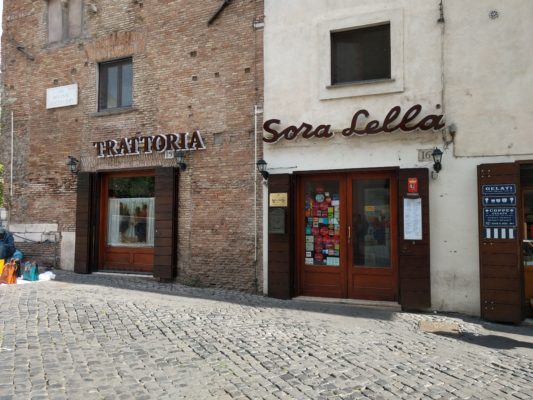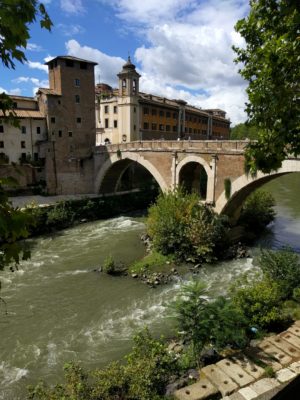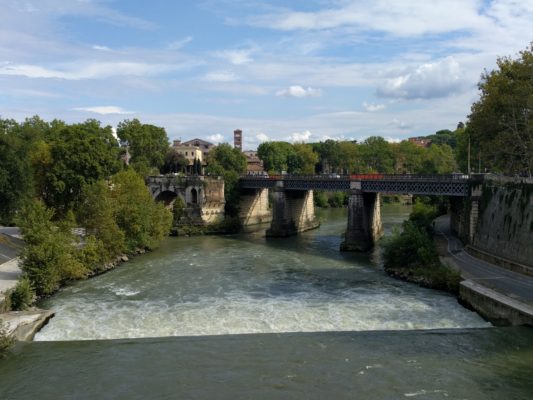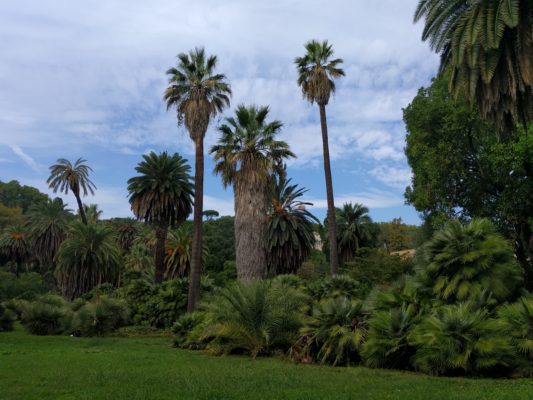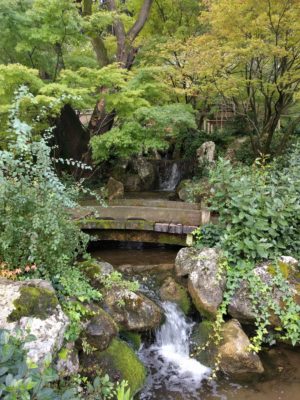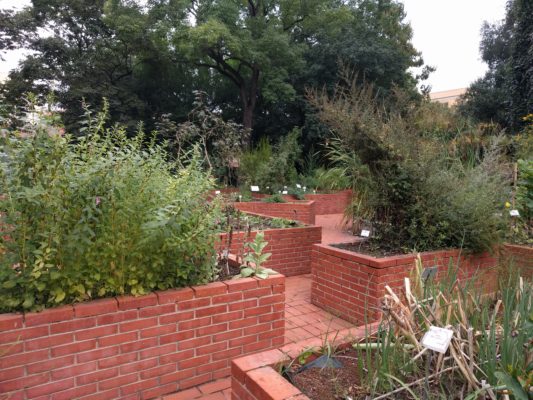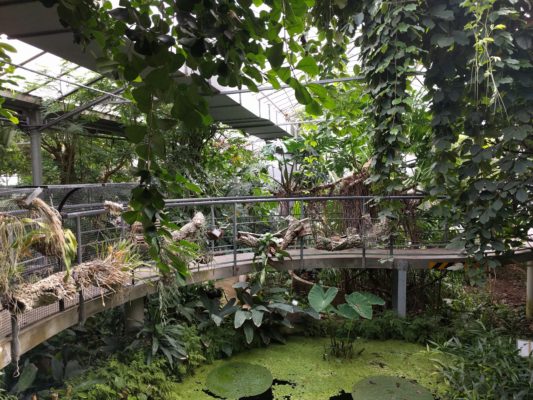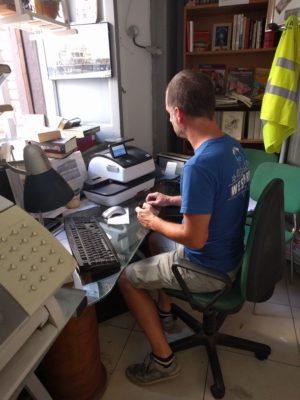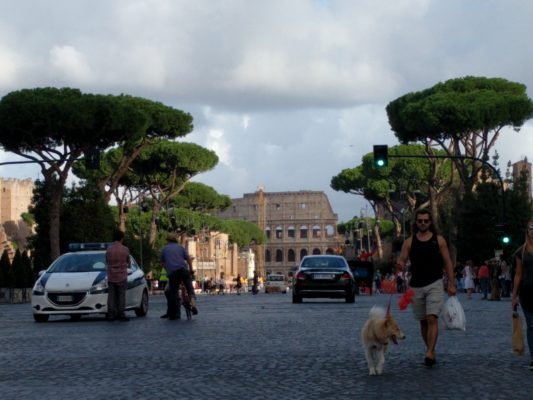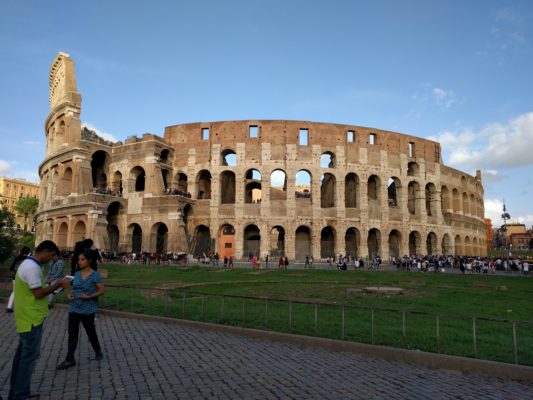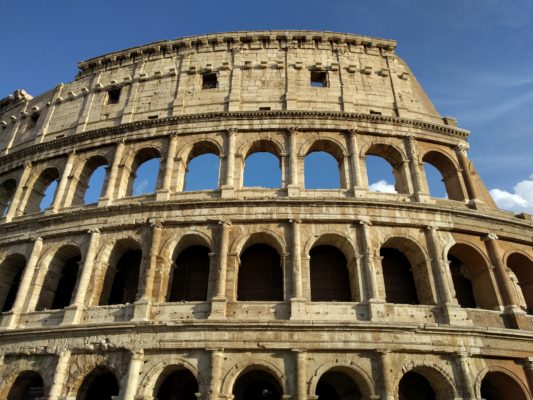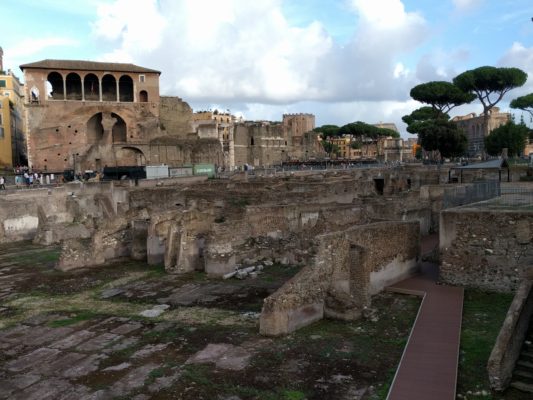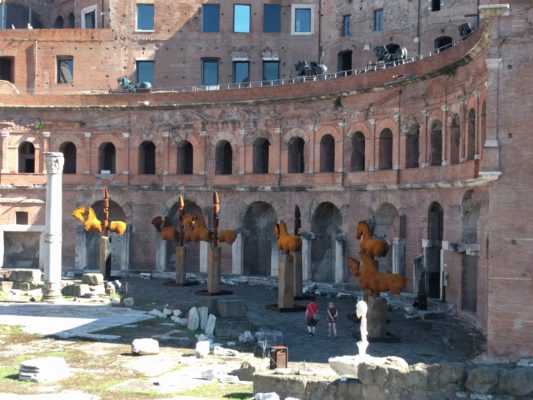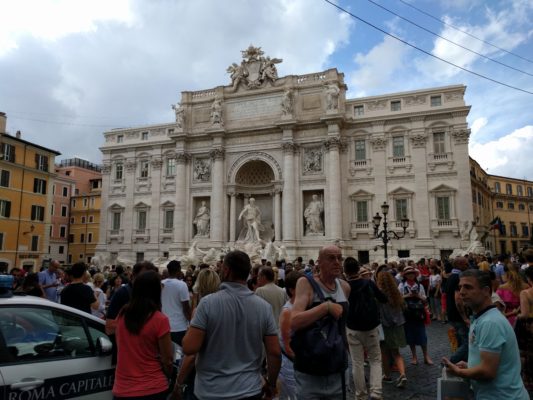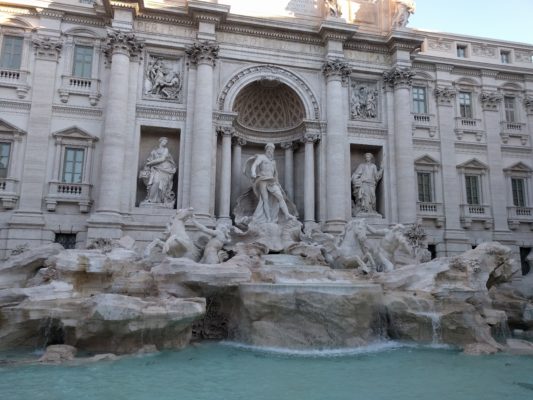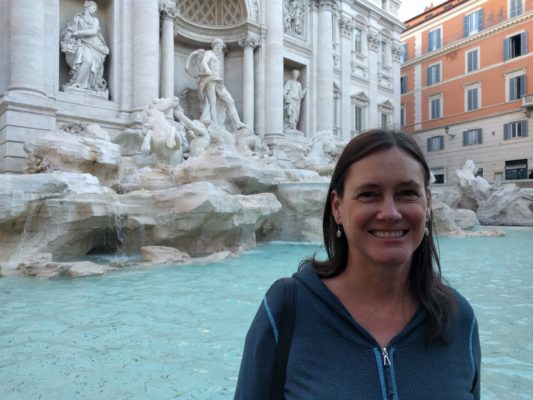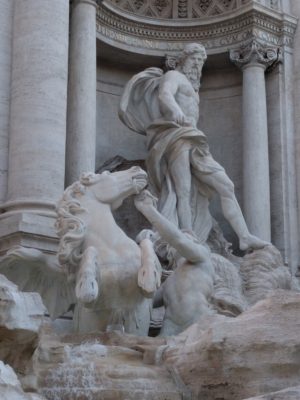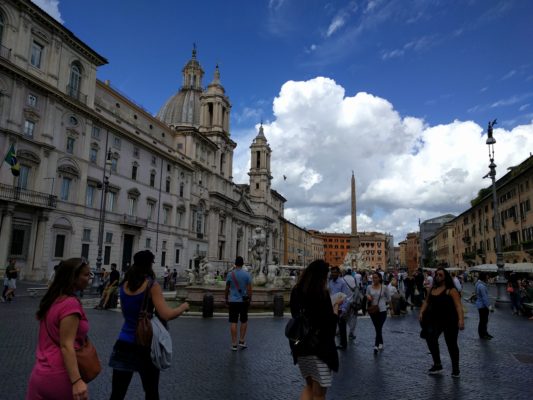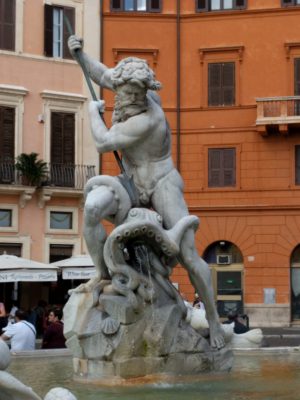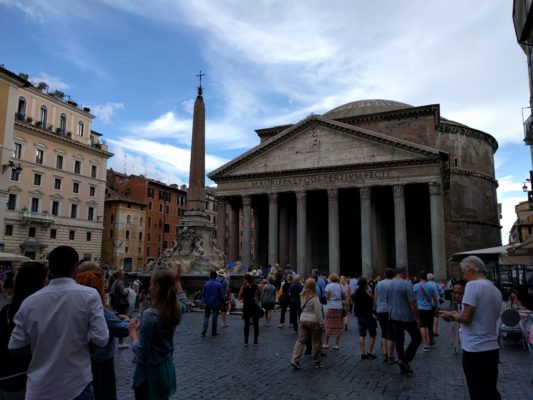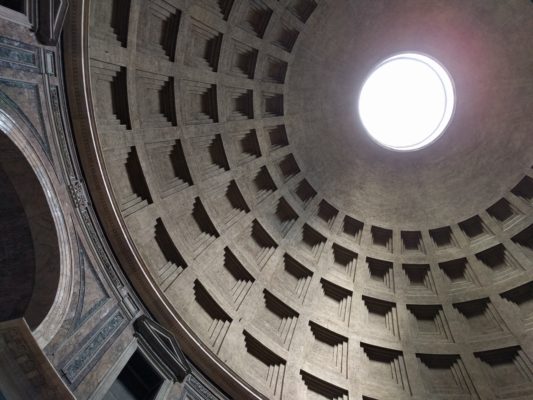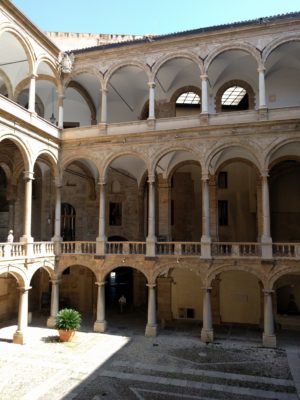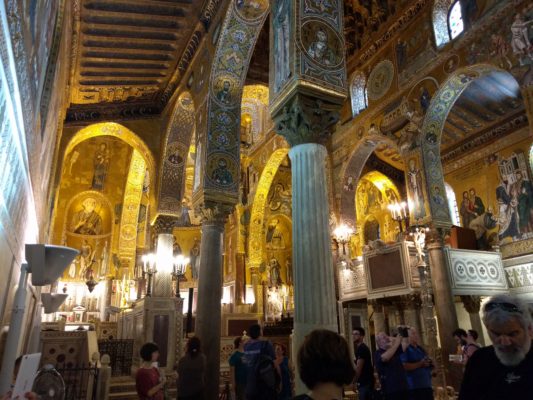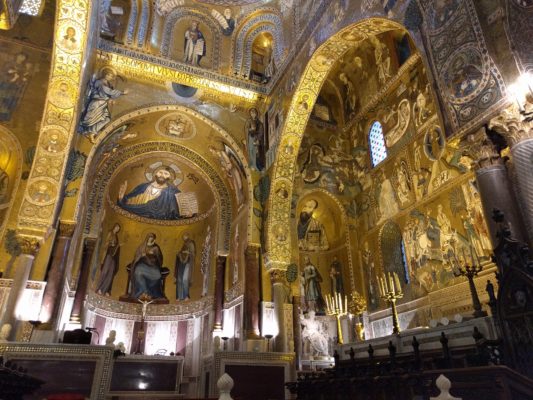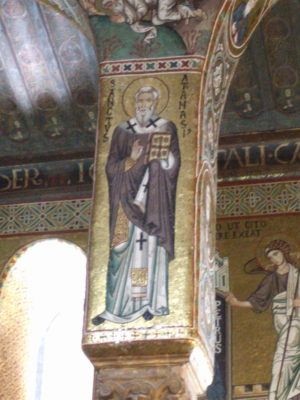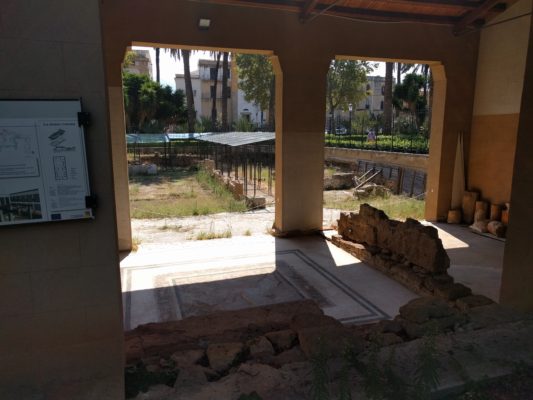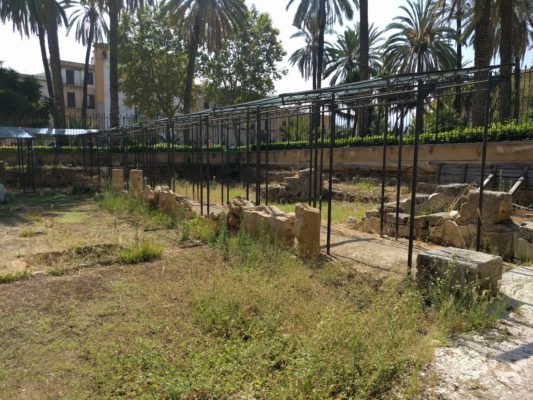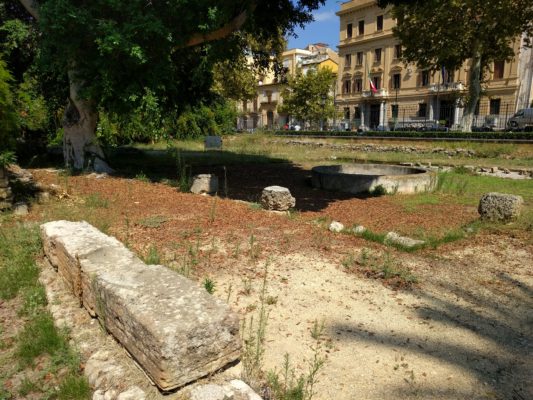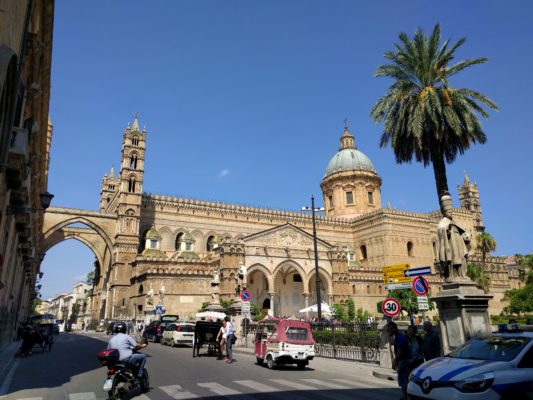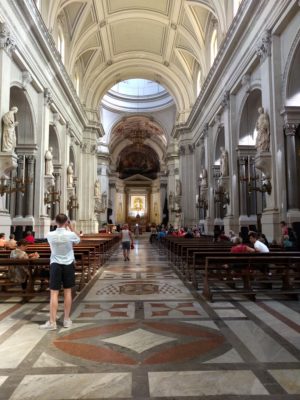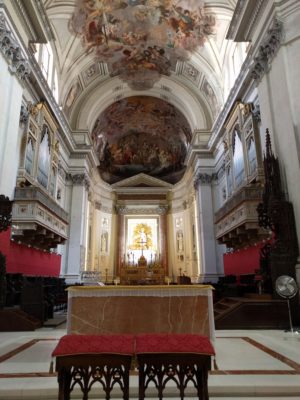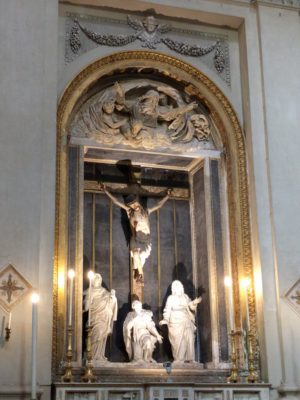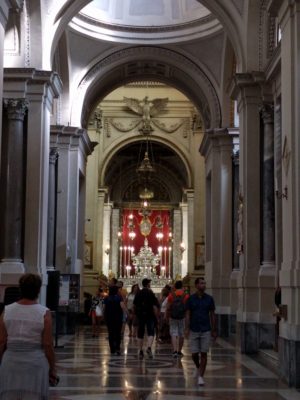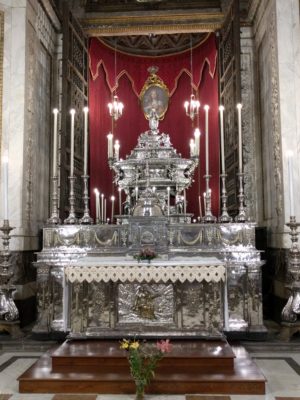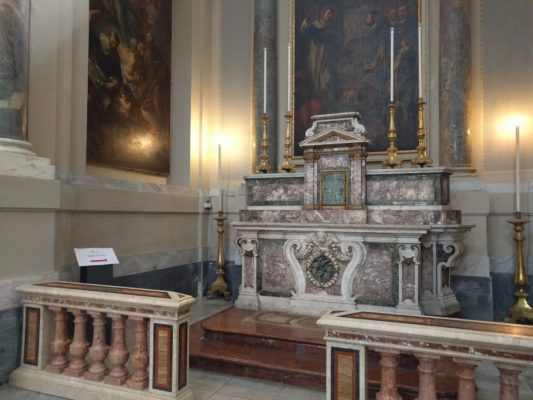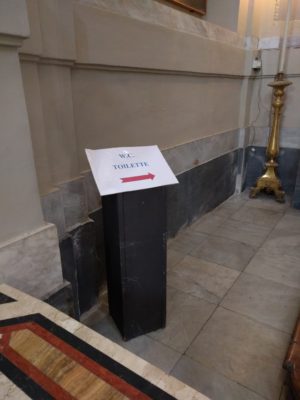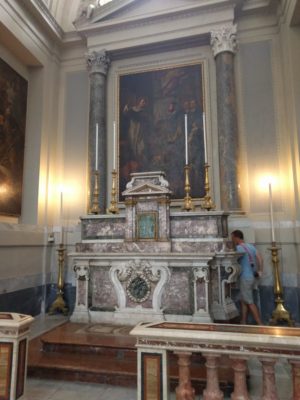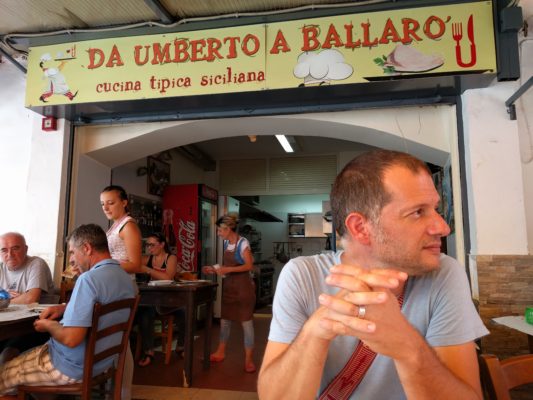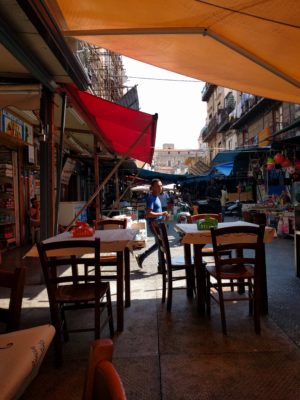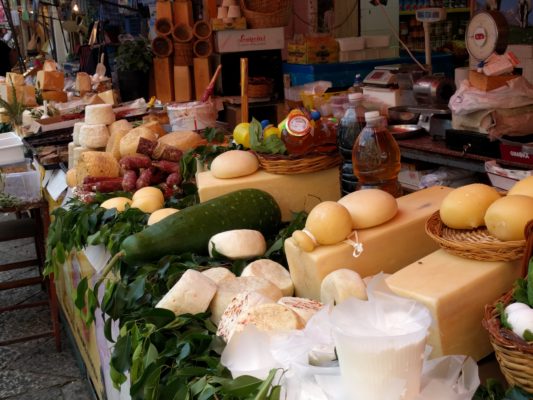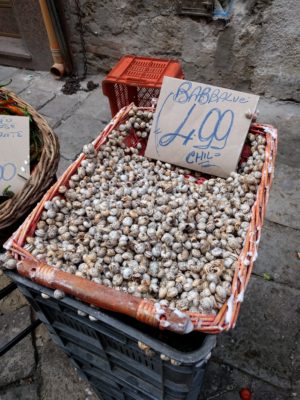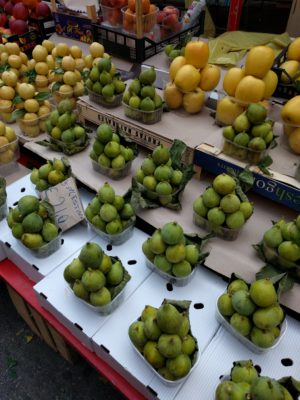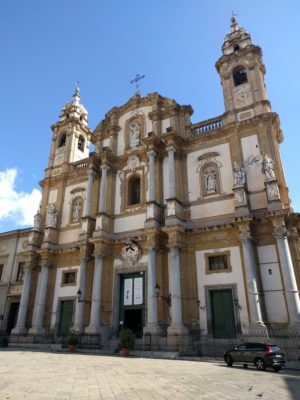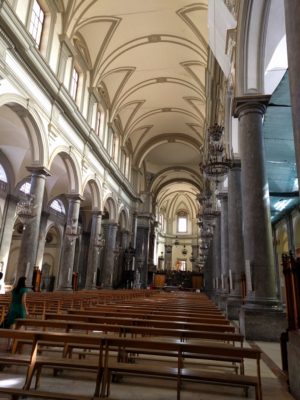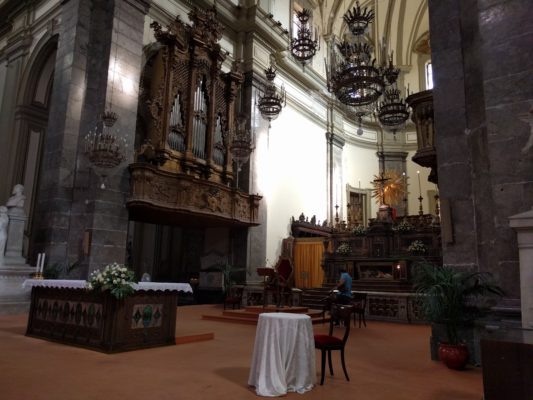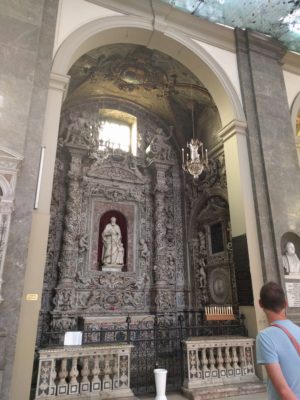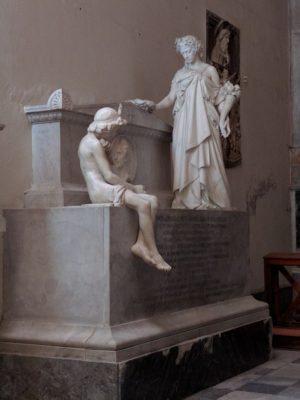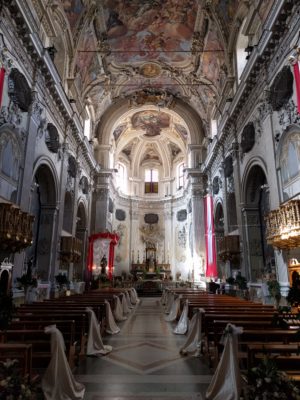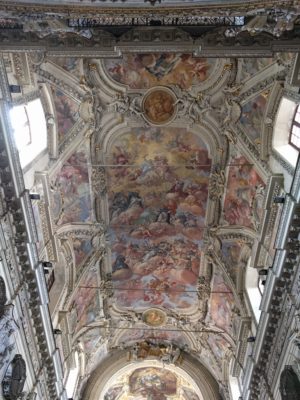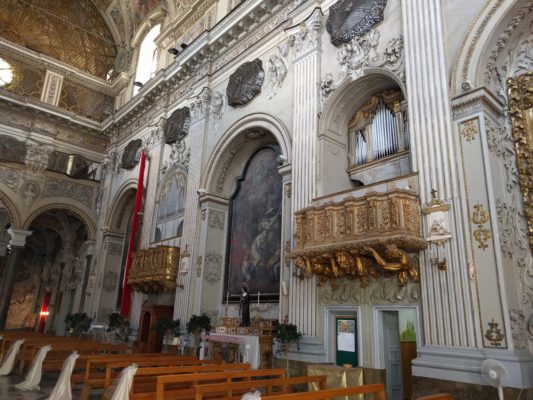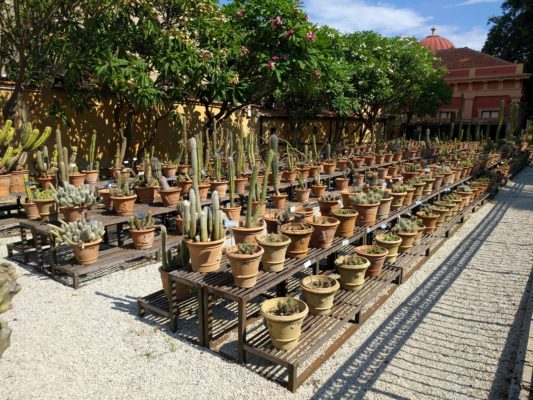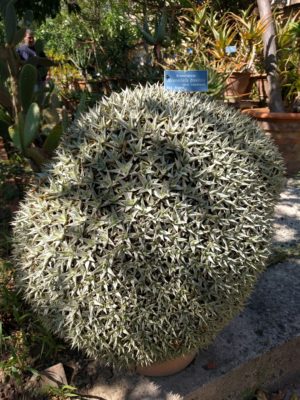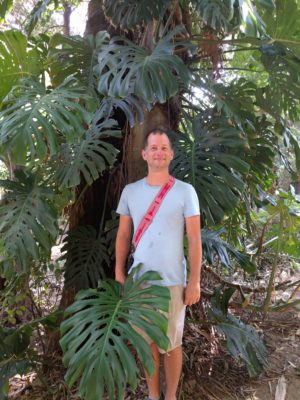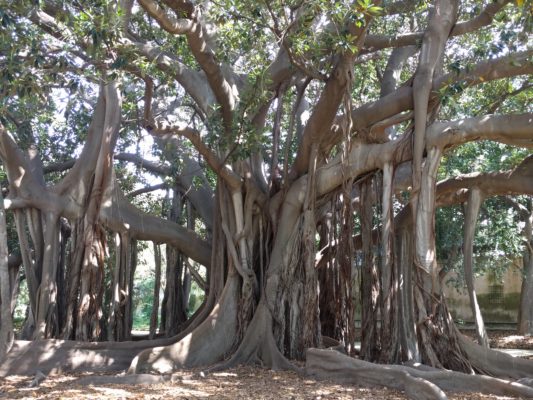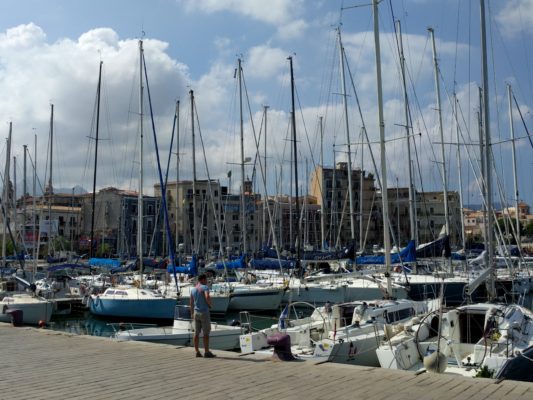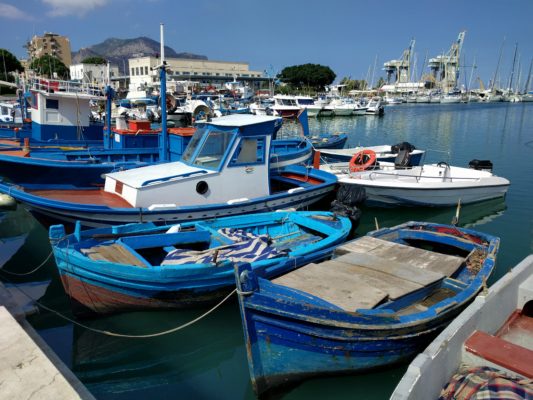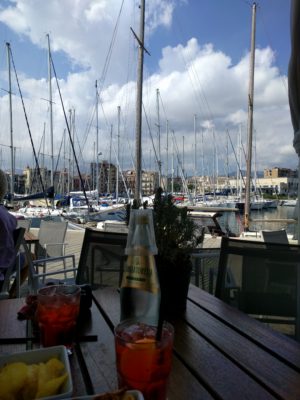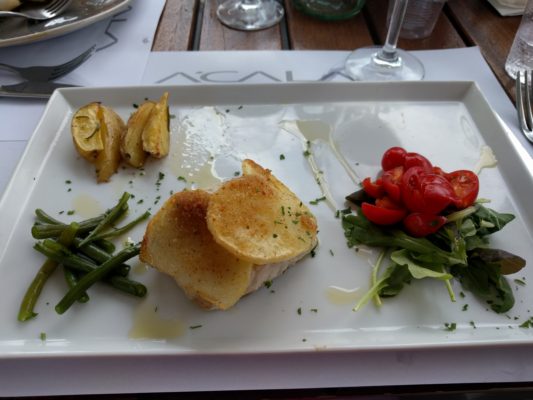Tomorrow we head to Guardialfiera, our home for the next two months. From what I can see on Google maps, there is only one restaurant in the town. Therefore, we decided to splurge on eating out during our 4 days in Campobasso, even though we have an apartment with a good kitchen. We plan to prepare our own meals in our apartment in Guardialfiera.
In Italy, it’s common to go out for an aperitivo (a small drink) and a snack around 6 pm. This tides you over until dinnertime at 8 pm or later. Chad and I embrace this custom when we are in Italy. You have a small beer or wine or cocktail and savory snacks while you socialize and people-watch. Happy hour usually lasts 1-2 hours. Here’s our happy hour one evening:
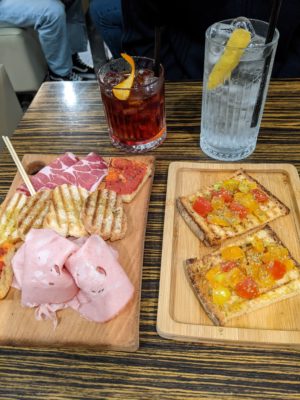
Bar Luppachioli – assorted cured meat, toast, and toast with chopped tomatoes, a Negroni cocktail and a gintonic
For meals, here’s what we ate during our long weekend in Campobasso. (File this blog post under “Food Porn.”)
Osteria Cannavina:
This was where we dinner down in the cave-like basement. This dinner took 2-1/2 hours.
– Appetizer – mix of salumi (cured meats), squash flan with pecorino sauce.
– Pasta course – tagliatelle au ragu di coniglio (pasta with rabbit sauce), tortellacci dell’Osteria (house tortellini stuffed with pork).
– After-dinner drink – genziana (local liqueur made from local ginseng root). We first had this at Chad’s relative’s house just north in Abruzzo. It is earthy and savory and “forte” (strong). You just have a small glass of this after a meal, and it helps with the digestion. (See below for photos.)
Il Sagittario:
There was no menu. The server listed off the items for each course, and then you told him what you wanted. Keep in mind that we went to a bar for a cocktail and snacks before going to the restaurant, so I was not as hungry as I thought. The server convinced us to each get our own appetizer plate, and then he was scandalized when I said I was full afterwards and that I couldn’t eat even a pasta course. I did eat a little bit of Chad’s pork dish, because he was also kind of full. This dinner took 2-1/2 hours.
- Appetizer – mixed items. See photo below for a list of all the items.
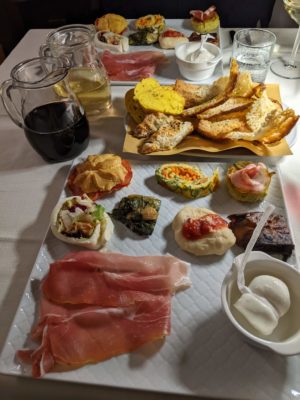
clockwise from bottom left – cured ham, the “wrap” is veggies and mozzarella, a little sandwich with spicy soppressata and the “bread” was the light pastry bread that you find in an eclaire, an omelette slice rolled with veggies, mashed potatoes with a cheesy crust, roasted eggplant, english scone/biscuit with jam, buffalo mozzarella
- Meat course – pork roasted in red wine with bitter greens and homemade chips.
- Dessert – biscotti.
- After-dinner drink – genziana.
Ristorante Miseria & Nobilta:
This family-run restaurant has been around for years, and all the pasta is made in-house. All dishes and ingredients are local, and there is the option to make most of the dishes vegetarian, vegan, and/or gluten-free. In Italy! This lunch took 2-1/2 hours.
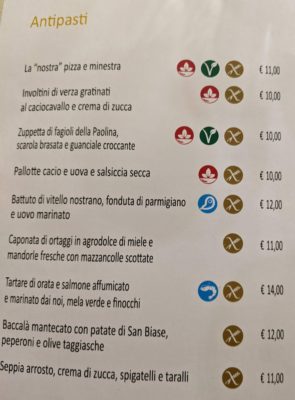
the antipasto (appetizer) menu: red means “can be made vegetarian,” green means “can be made vegan,” tan means “can be made gluten-free,” blue means either “raw fish” or raw meat”. this variety was typical throughout the menu.
- Amuse-bouche – sliced polenta with bitter greens and pecorino.
- Appetizer – smoked salmon and orata tartare with green apples and fennel.
- Pasta course – tricolor gnocchi (to represent the colors of the Italian flag) with broccoli rabe, cavatelli with broccoli, pecorino and guanciale (pig cheek).
- Dessert – panna cotta with espresso and amaretto cookie sprinkles, creme brulee with licorice flavor.
- After-dinner drink – genziana, espresso.
Kudeta:
We stopped in here on our first night for a happy hour cocktail, and the experience and snacks were so good that we made reservations to go back another night for dinner. The menu had several items with an Asian influence. This dinner took 2-1/2 hours.
- Amuse-bouche – fried polenta with roasted bell pepper cream.
- Appetizer – shrimp with an Asian dipping sauce, cannoli filled with bacala (salt cod) and sauce of roasted peppers.
- Pasta course – ravioli cinesi (pork-stuffed ravioli served with gyoza sauce).
- Meat course – seared salmon with sesame seeds and soy sauce.
- Dessert – millefoglie pastry with orange cream and maraschino cherry sauce.
- After-dinner drink – genziana, mescal.
Breakfast:
Typically an espresso at the pastry shop downstairs from our apartment, drinking while standing at the barista counter. This morning we ordered pastries and cappuccino and sat at a table.
Ristorante Chad:
We did have a couple of meals at home and, as usual, Chad’s meal prep rivaled that of the restaurants.
- Lunch today – pork cutlets, arugula salad with fennel and orange, green beans, olives, toasted bread, and fruit. This lunch took 15 minutes.
After eating so much food over the last few days, tonight’s dinner will be light – some soup we picked up from the grocery store, the rest of the green beans, fruit, and yogurt.
But first, the traditional happy hour drinks and snacks! This time we went to a small beer bar/shop. One wall had beers and whiskey for sale. There was also a little section of dry pasta in packages for sale, of course!
